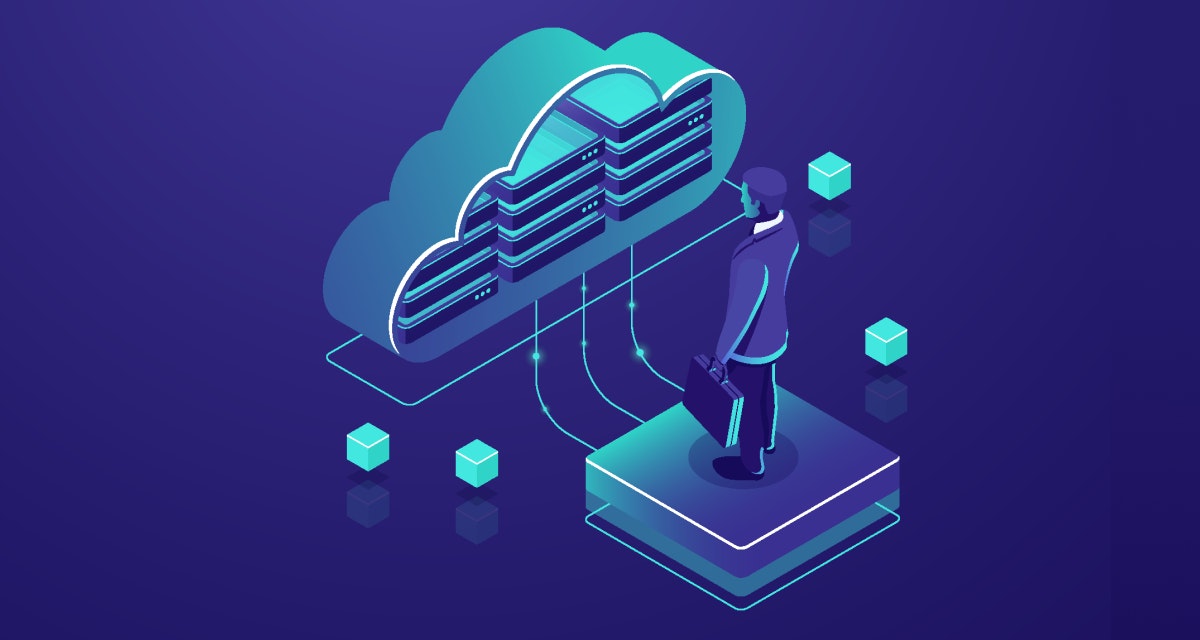For a very long time in the tech community, developers and the operations teams worked in silos. While the former wrote code for an application, the latter was responsible for its deployment and integration. However, communication was limited between the two groups.
When Agile Methodology entered the picture in 2001, this way of working went right out of the window. Breaking up a project into several tasks and ensuring constant collaboration between stakeholders became the new norm.
That is how the concept of DevOps came into being.
What is DevOps?
As the name suggests, DevOps stands for development and operations. It is a practice to merge agile software development and IT operations[deployment and integration] into a single set of continuous processes.
This framework shortens the software development lifecycle and encourages the faster and swifter release of applications in the market.
It also automates time-consuming and tedious manual tasks in the project and encourages a customer feedback loop involving application testing, deployment, and iteration.
DevOps adoption has significantly grown by 17% from 2017 to 2018, and this number is only expected to realize in 2021, registering a CAGR of 18.7% in 2023. Moreover, high-performing companies that practice DevOps can enjoy the following benefits:
Many popular brands such as Facebook, Amazon, Netflix, and Etsy apply the DevOps methodology in their workflows.
History of DevOps: how it all began
DevOps was conceived in 2007 when software development and IT operations communities raised their concerns about the dysfunctions in the industry. They were against a working model wherein one group that wrote the code was functionally and organizationally kept apart from the group that deployed and maintained it.
Moreover, both developers and operations specialists had separate objectives, leadership to report to, and KPIs based on which their performance was evaluated. This isolated way of working caused many botched application releases, longer working hours, operational issues that ultimately led to an unhappy customer base. Companies were bleeding money due to this.
Realizing that applications could be developed in a far more efficient way, the two communities sat down for a discussion and brought the concept of DevOps to life. An Atlassian report found that nearly 9 out of 10 DevOps teams today are confident about the code's success that goes into deployment. That says a lot about efficiency!
However, please note that this transformation due to DevOps does not happen overnight. Both teams still have to understand the value the concept offers and implement small but incremental changes to embark on the DevOps journey right away.
How does DevOps work?
The DevOps model is like an umbrella under which development and operations teams are no longer siloed. It ensures collaboration between development and operations teams for the entire software development lifecycle — from coding and testing to deployment and maintenance.
CI/CD with GitHub Actions: A Guide for Cloud & DevOps Teams
Explore Now!In specific DevOps models and practices, security and quality assurance teams also join forces with development and operations to work closely with them throughout the application cycle as a single function. This is sometimes referred to as DevSecOps, and such teams follow best practices to automated processes historically manual, repetitive, and time-consuming.
They use a full-fledged technology stack, which helps them operate and evolve applications quickly and reliably. These DevOps tools also help the teams to accomplish tasks that typically need input from other teams independently.
This includes tasks such as the deployment of code or provisioning infrastructure. That way, the DevOps team can increase their velocity and tap into their full potential.
Seven benefits of DevOps: why it is popular
Without a doubt — companies that incorporate DevOps practices enjoy many benefits. For starters, the concept allows a single team comprising cross-functional specialists to work together and deliver an innovative application swiftly and reliably.
Following the DevOps approach leads to seven core advantages covering business, technical, and cultural aspects of software development, namely:
1. Speedy delivery time
DevOps is responsible for accelerating the speed and quality of product releases. This liberates companies to innovate for their customers faster, thus keeping up with the ever-changing market trends and drive optimal results and higher revenues.
The shortened application development lifecycle also puts less pressure on the company's pockets as it gets launched faster but after it has been appropriately tested.
2. Scalability
As mentioned earlier, DevOps enables companies to kickstart and operate the development processes while ensuring the scalability of the application. In such a scenario, consistency and automation help the DevOps teams manage complicated systems efficiently with reduced risk.
For example, it is easy to manage development, testing, and deployment efficiently with infrastructure as code. DevOps makes it happen! Scalability is not a problem anymore.
3. Reliability
At the end of the day, the goal of DevOps is to ensure that the application's quality does not get hampered and the teams can deliver it as per schedule, without any delays, while maintaining a positive experience for the consumers.
The DevOps teams also apply practices such as continuous integration and continuous delivery [CI/CD] to test the application's functionality and safety at each stage. Besides, DevOps techniques such as logging and monitoring help them stay well-aware of the app performance in real-time.
4. Security
DevOps model takes care of your security. It takes it seriously. Companies do not have to sacrifice their security by using automated compliance policies and configuration management techniques. In short, it is possible to move quickly through the development cycle while retaining control and ensuring full compliance.
5. Collaboration
Undoubtedly, bringing various cross-functional specialists under a single roof and giving them all the necessary tools and support to develop a software application adds up to a better working environment.
Developers and operations teams collaborate, share responsibilities, and combine workflows, thus creating an attitude of accountability and ownership of tasks. This also reduces inefficiencies and shortens the application development lifecycle.
6. Internal defect detection
DevOps teams are more productive and cross-skilled, leading to the birth of innovative ideas and a smarter way of working. Plus, the automated and continuous monitoring and testing of the application helps build overall build quality. That way, teams can exchange feedback for detecting the application defects early and resolving them before any significant damage.
7. Prompt feedback
The DevOps model also encourages faster feedback and allows developers to fix bugs in the early stages. In a nutshell, it will enable them to focus on the quality of the product as many manual processes get automated or streamlined in advance.
NoOps: what is it, and how is it different from DevOps?
In a typical DevOps model, automation and rapidity are the core pillars as they reduce the burden on operations teams and focus on high-level work that involves collaborating with cross-functional teams.
However, what do you think will happen if automation takes over the roles of developers? That leads us to the concept of NoOps.
First coined by Forrester VP & Principal Analyst Mike Gualtieri, NoOps refers to a working model in which developers will never have to speak to an operations personnel ever again.
In NoOps, developers will write the code and make the push changes after the application is automatically developed and ready for deployment. In a nutshell, NoOps is opposite to what DevOps stands for. Here is a comparison:
The idea of removing infrastructure management indeed looks tempting because of the usual enormous infrastructure management costs involved. However, infrastructure is not the issue. It is the process that needs to be well-designed and optimized for optimal deliveries.
Create smart infrastructure with little maintenance effort and automate everything with the help of cross-functional specialist teams. Let DevOps do its job!
Popular DevOps methodologies
Companies use the following DevOps solutions to catalyze and improve software development and product releases:
Scrum:
It refers to a process for developers and operations teams to work together and accelerate the development process. Some primary practices in Scrum include time boxes, Scrum Master, sprints, and Daily Scrum.
- Kanban:
This is a workflow management technique that defines, manages, and improves how one approaches a set of activities efficiently. - Agile:
Agile is a time-boxed and iterative approach to software development that breaks down the process into smaller tasks and tackles them incrementally.
Seven DevOps practices to follow in software development
DevOps has established its authority in the global software development industry and is now being incorporated by many companies at an increasingly fast pace and for a good reason!
It effectively facilitates the resolution of certain types of problems occurring throughout the development lifecycle. With the right set of tools, skills, and processes, there is nothing that the DevOps teams cannot do.
Any company can enjoy the benefits offered by this approach and derive maximum business value provided they follow the following seven DevOps best practices:
1. Agile planning
Based on Agile Methodology , agile planning helps the DevOps teams organize their work in sprints that increase the number of releases. That way, the teams only have high-level objectives outlined and a detailed strategy for two iterations in advance.
This way of working helps the DevOps teams to be more flexible and pivot once the application is tested in the beta version.
2. Continuous development
In this phase, developers commit to writing smaller pieces of code throughout the day to be tested quickly. The development work is also divided into smaller portions so that adequate care can be taken to test the app precisely, thus reducing glitches and bugs significantly.
3. Continuous automated testing
In continuation to #3, with the help of automated testing tools such as UFT, Selenium, and Ranorex, the quality assurance teams keep a tab on testing in real-time. On discovering bugs and vulnerabilities in the software, the codes are sent back to the engineering team for fixing.
4. Continuous integration and continuous delivery [CI/CD]
Once the codebase has been successfully tested, it gets integrated into a single, shared repository on the server quickly. DevOps CI/CD avoids the problem of frequent code submissions that hinders the mainline code and individual code branches.
5. Continuous deployment
This is when the codebase gets deployed to run on a public server so it does not negatively impact the already-functioning features of the software and can be made available to a broader audience.
Some popular automated tools such as Puppet , Google Cloud Deployment Manager ,and Chef help the DevOps teams deploy a product incrementally and hassle-free.
6. Continuous monitoring
This is the final stage of the software development lifecycle and involves the thorough assessment of the application. Monitoring is done to detect the problematic areas in the software and analyze the feedback received internally and from the beta users to improve the product performance before it is launched in the market on a massive scale.
7. Infrastructure as a code [IaC]
IaC refers to an infrastructure management approach that makes continuous software delivery process possible. It makes use of scripts to automate the deployment environment. Without IaC, each target environment would require special treatment, which could be tedious and time-consuming. That is what makes it an integral part of the software development process.
Tools and technologies used in DevOps
DevOps' main goal is an automated release process and smooth integration, and to do so, the teams use specific tools. Sure, they can build software from scratch, but that is not common practice anymore.
Nowadays, software development processes can be automated with custom scripts, and developers usually use various open-source products. Let us check out the most popular tools used in DevOps:
1. Jenkins :
It is a tool used as a server for continuous integration or a constant delivery hub responsible for smooth and uninterrupted workflows during the development. Jenkins also offers hundreds of plugins that support building, deploying, and automating any project.
2. Git :
It is a free and open-source distributed version control system designed to handle everything from small to large software development projects with great speed and efficiency. Git is easy-to-learn and ensures lightning-fast performance. It also comes with many features such as convenient staging areas, cheap local branching, and multiple workflows.
3. Nagios:
It is an infrastructure monitoring tool that presents critical analytics in attractive visual reports.
4. Chef:
It is an IaC running both on hardware and cloud servers. It automates configuration management, application deployment, and cloud provisioning.
5. Selenium :
It is an automated browser that enables quality assurance teams to write scripts and test web products.
Principal roles and responsibilities of the DevOps team
The DevOps team is a versatile group of developers, operations specialists, security teams, QA executives, and so on. Naturally, the work that they do is also dynamic. Here is an overview of the roles they fulfill daily:
1. Infrastructure planning, testing, and development
The DevOps teams manage the cloud environment's functions and write secure code to scale them to fulfill immediate needs. This includes adding:
- Permissions
- Entire objects that function, such as containers
- Workflow processes or changing them
- Users to a cloud infrastructure
The DevOps teams also write specifications and documentation and support the infrastructure components. They are also well-versed at testing in a virtual environment.
2. Scripting and coding of the software
The DevOps team is responsible for supporting the users of the infrastructure they develop, including safeguarding against hackers and viruses.
3. CI/CD management and automation
Since such teams are developed on the premise that every practice in a company needs security measures. Therefore, the team fosters an understanding of business practices, provides monitoring and testing DevOps services across all platforms.
DevOps engineers are also responsible for a plethora of activities, including:
- Leverage automation services and platforms
- Application performance assessment
- Application monitoring and making improvements
In conclusion, the DevOps teams believe in transparent communication, respect timelines and delivery schedules, work collaboratively and are highly flexible and adaptable.
Summing it up
Ever since DevOps has come into play, the software development world has benefited in many ways. From speeding up the development process to delivering high-quality products, this concept has changed the game and for a good reason.
There is no doubt that DevOps teams need to be more involved in the decision-making aspects that lead companies to digital transformation in this day and age.
Are you looking for a DevOps team that can develop, test, deploy and launch an app into the market swiftly, reliably, and hassle-free? Wait no more — speak to experts at Intuz and get your dream app sorted today!





